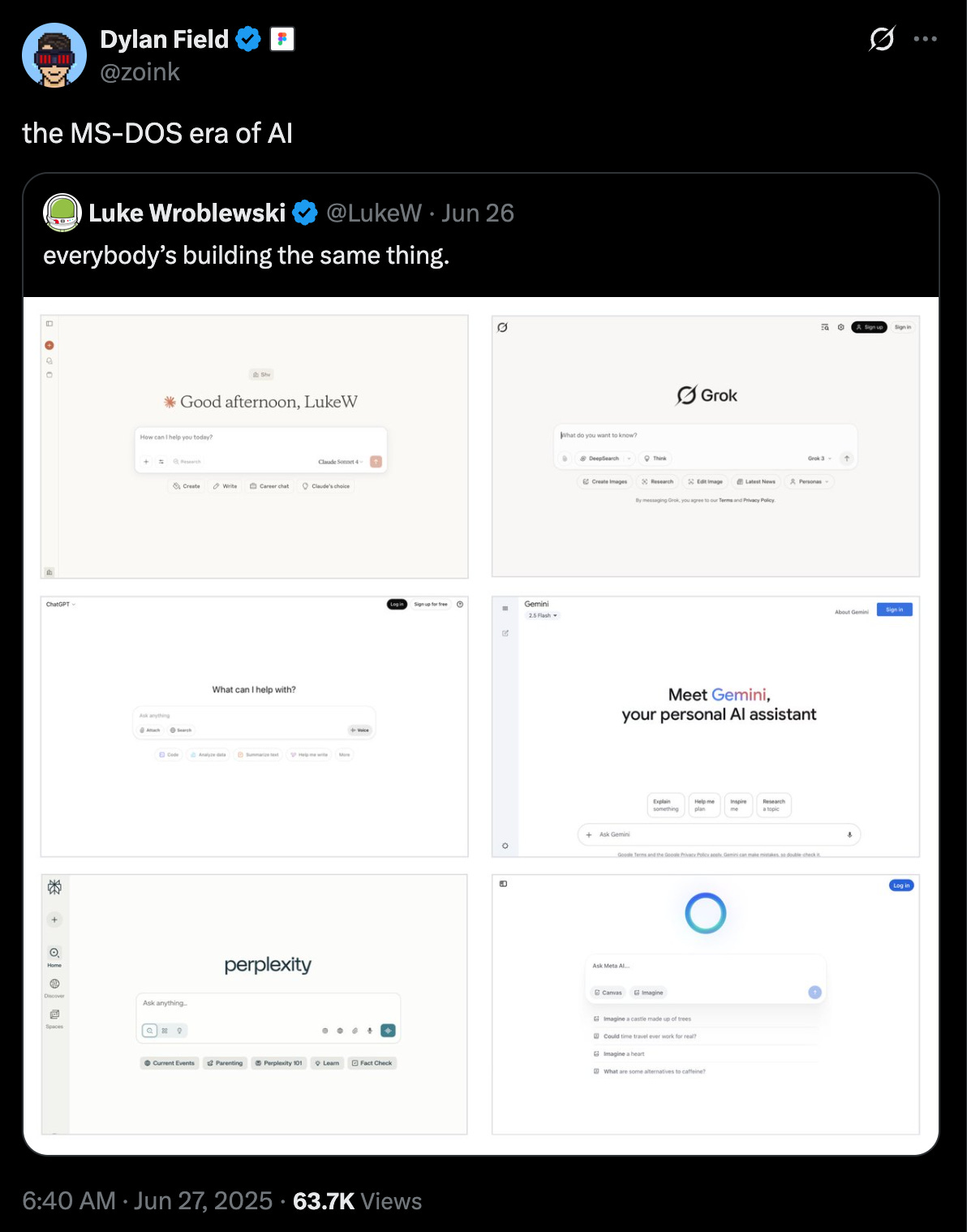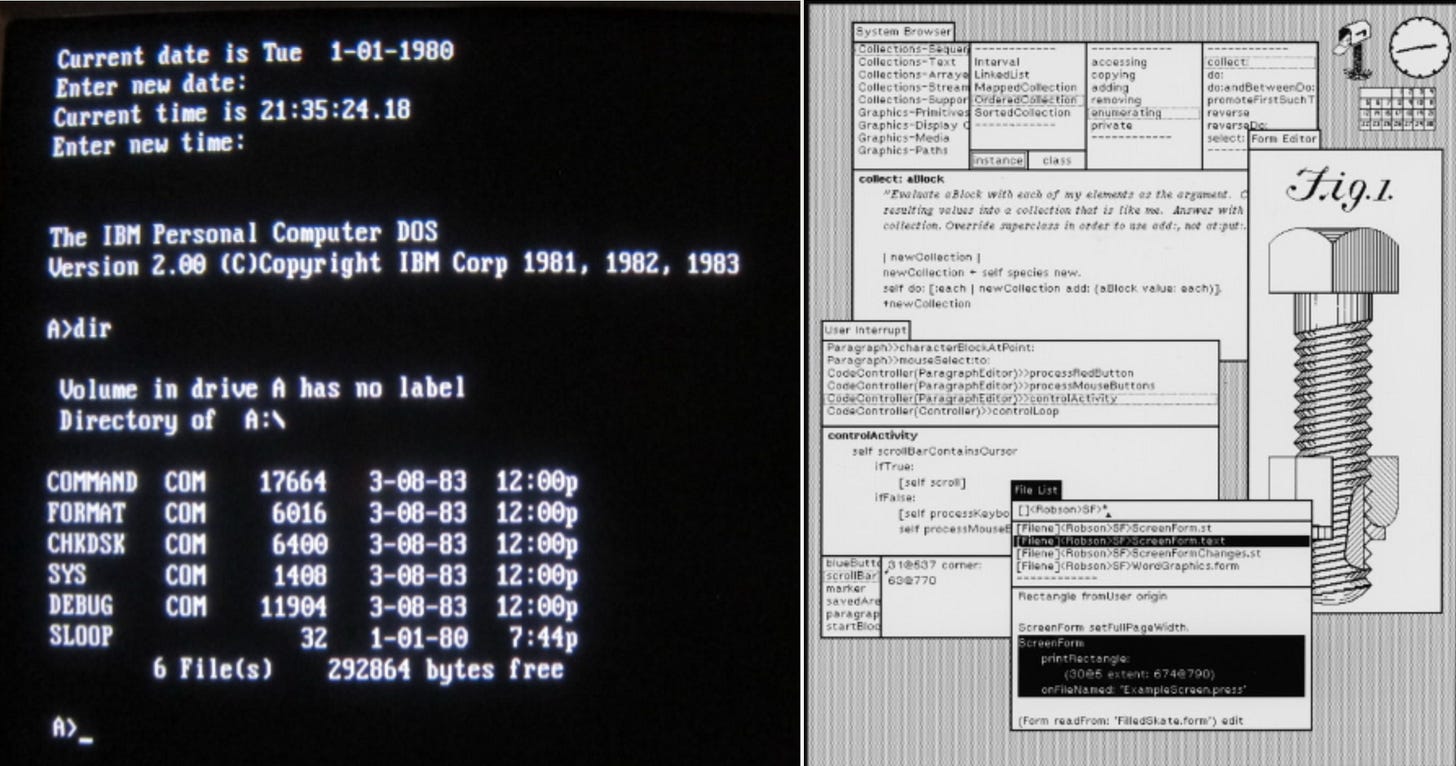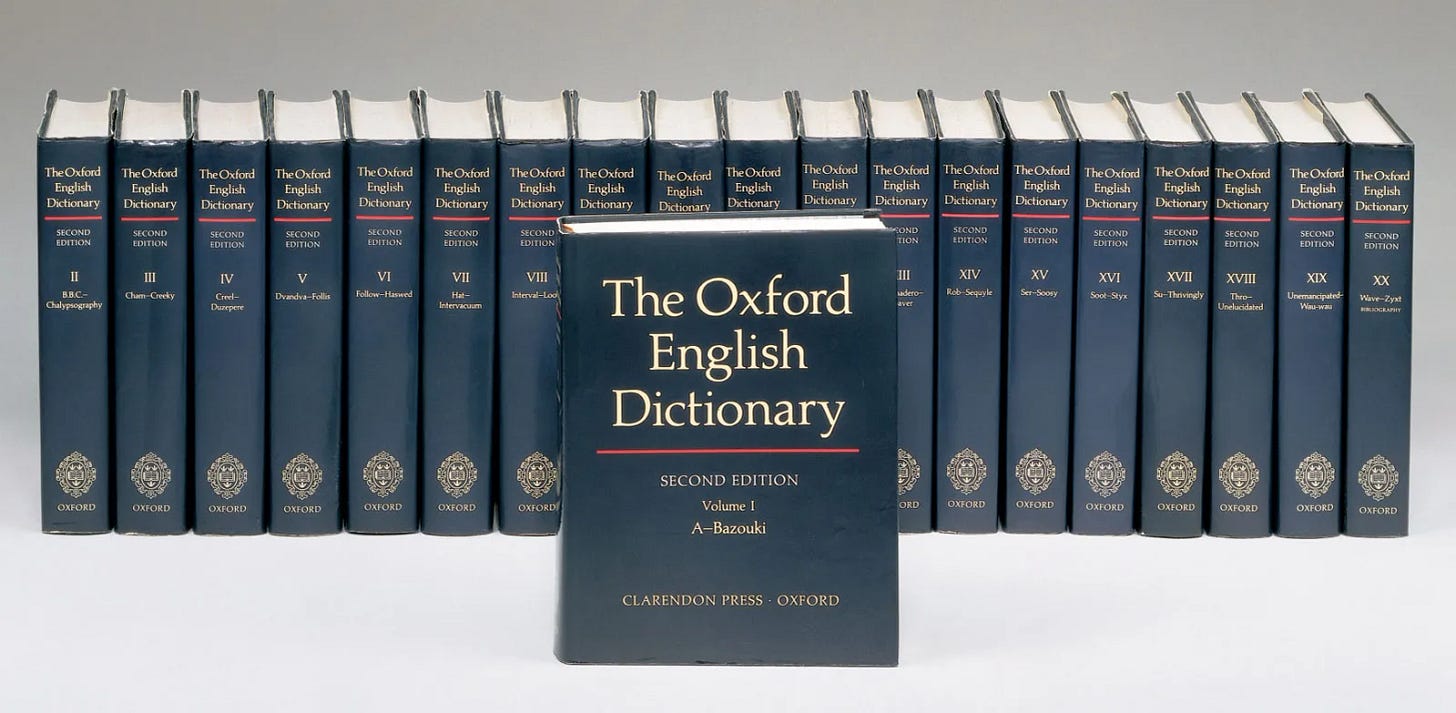The best user interface for LLMs is writing well
"the Affordance is coming from inside the Language"
The software zeitgeist is asking: “what does the future of UI look like now that language models exist?”
There’s a collective feeling that current UI badly reflects AI’s capabilities. We’re hiding the power of AI behind legacy affordances, creating AI horseless carriages. We haven’t properly mapped the affordances of AI to the affordances of UI, so we wind up with an anti-UI, the command prompt.
One path forward is to radically re-imagine the rules of UI. There may be UI patterns that better reflect the fluid material of linguistic intelligence. Malleable UI, generative UI, conversational UI, and agentic UI are all contenders. The PARC GUI of AI is waiting somewhere in the wings.
But we might be looking for visual solution to a linguistic problem. The most important affordance space for LLMs might be outside the computer.
LLMs are machines for producing language that has fitness to a context of use. Training compresses the patterns of human language into a semantic space. Prompts steer the model to a region of semantic space. The model then generates the language which best fits that region.
To make the most of LLMs, we need to ask, what are the best tools for skillfully navigating semantic space? The best tool may not be a GUI at all. The best tool may already be with us, a millennia-old companion.
Writing is an ancient vessel for exploring semantic space. Vocabulary, structure, and voice are rudders on the ship steering through this space. Words encode histories and family trees of meaning. Each word compresses an inheritance of every context it has ever appeared in.
A great writer is a skilled navigator of semantic space. The new trick of prompt engineering is founded on the old art of literacy. Mastery of LLMs requires mastery of language. To the degree to which someone deeply knows the landscape of their language, they will know the mirror landscape compressed within the LLM.
To access richer affordances from LLMs, to summon a better interface for LLMs, we may simply need to become better writers. There are probably many novel ways for UI to mediate between a user's literacy and an LLM's semantic space, but the power UI for LLMs is outside the computer, in language itself.





That’s like saying we shouldn’t have automatic transmission, you should be better at manual or paddle shifting. Text prompt will most likely remain, but having intuitive tools for context specific applications is sensible to get more out of a product for a larger range of people